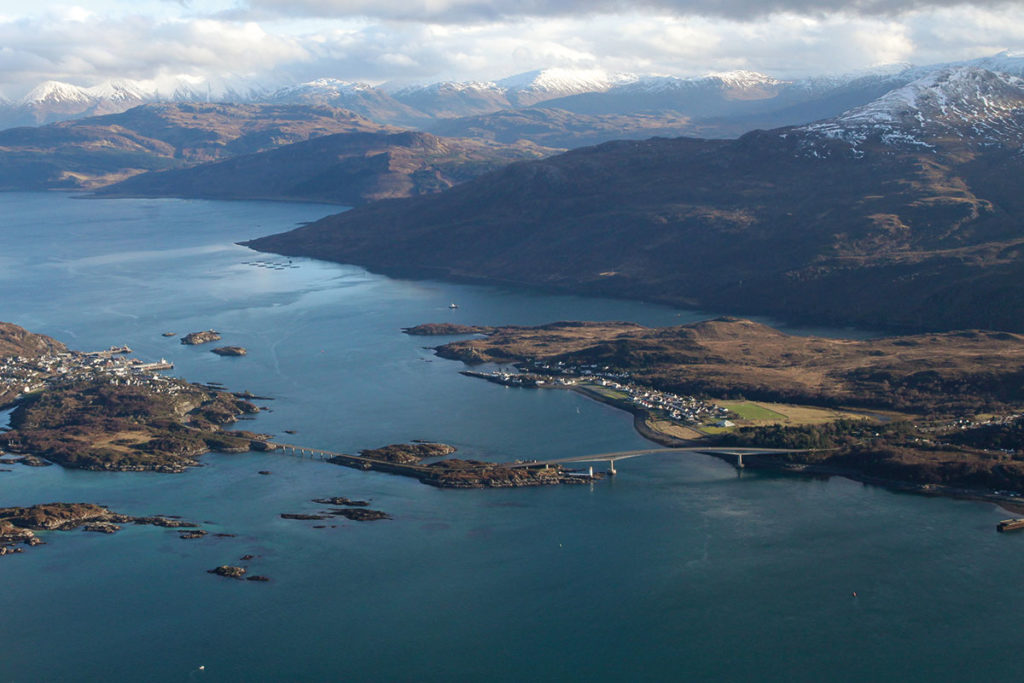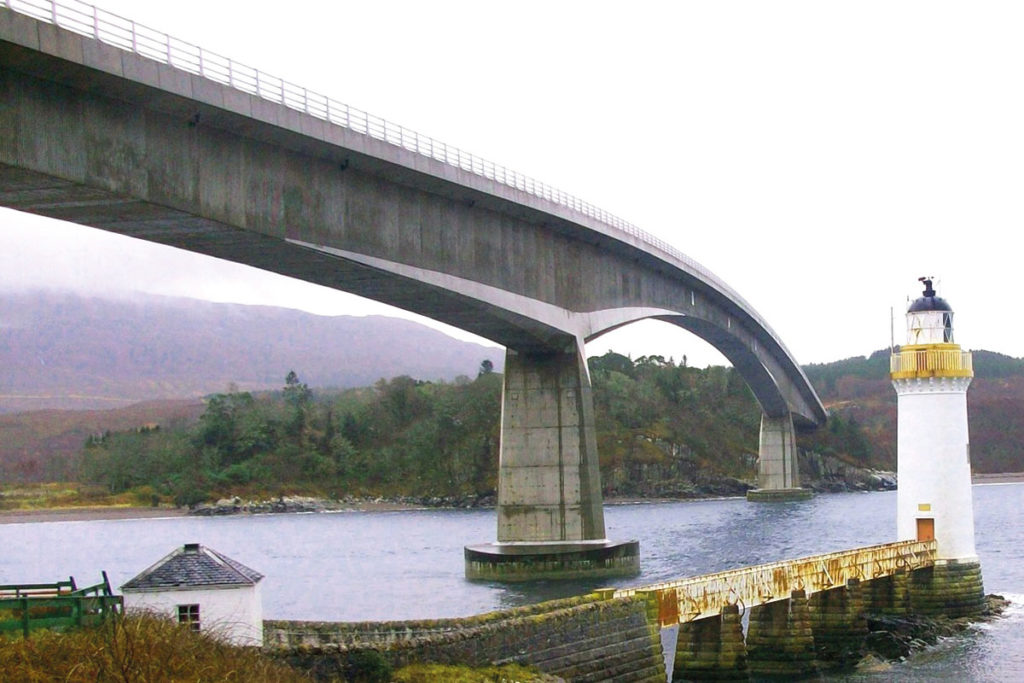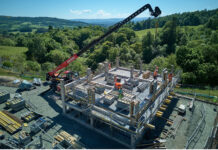
THE iconic Skye Crossing is currently undergoing maintenance works intended to provide a renewed design life for essential components and minimise future maintenance.
The Skye Crossing comprises two bridges – the Skye Bridge, which is the larger of the two, and the Carrich Viaduct. The 1,600-metre crossing requires new expansion joints to ensure its continued safe usage as some of the bridge’s sections can move by up to 32cm during changes in temperature between the summer and winter months. Work on the £600,000 project kicked off on 16 may and is due for completion on 8 July.
The Skye Bridge is a 570m long post-tensioned haunch box bridge with three expansion joints, while the Carrich Viaduct is an eight span 198m long post-tensioned box beam bridge with two expansion joints. Both bridge structures opened in 1995.
Following assessment, it was decided that four of the five expansion joints are being refurbished while the fifth is being replaced completely.

“We’re replacing all the moving components, all the wearing components which include the sliding bearings, the sliding springs, the control springs, etc. We’re replacing all of these with newly galvanised components,” Chris Tracey, bridges manager at BEAR Scotland told Project Scotland. BEAR manage and maintain the nation’s trunk road network on behalf of Transport Scotland.
The fifth joint, described as the smallest with the least movement requirements, is being fully replaced by a surface-mounted 160mm Type 5 joint. The surfacing and waterproofing 10 metres either side of each joint are being replaced as well, Chris said.
Minimising disruption on the project is key. “It is important that we allow that traffic to move,” Chris continued. “Unfortunately, you can’t do it without causing some disruption. We have to have a lane closed at all times during the eight weeks, but we are allowing traffic to move in the other lane, either through convoy working when we’re resurfacing or by controlled traffic signals when we don’t have the large pieces of kit onsite.”
The five new expansion joints will “minimise maintenance and therefore disruption going forward, allowing the bridge to function as it was designed,” Chris added.
Meanwhile, BEAR Scotland has also recently commenced work on a £1.5 million bridge replacement project at Glencoe, which is set to last up to six months.
The A82 Allt Fhiodhan Bridge, which sits one kilometre southeast of Glencoe village, has been deemed substandard and needs to be replaced. The replacement structure, which has been designed to last for 120 years, will be designed in compliance with current DMRB standards and have no load restrictions. Additionally, it will provide improved cross section with carriageway width of 7.3m and a new footpath across the structure. New parapets and safety barriers, also in compliance with current standards, will also be installed.

Chris explained, “We’ve got to construct a temporary two-lane diversion; we’ve got to install a temporary bridge over the water course; we’ve got to demolish the existing structure; we’ve got to temporarily divert the water course; install a new box culvert in lieu of the old bridge; and then we’ve got to plane out the old road and construct the new road surfacing across the scheme, then install barriers and parapets.”
The BEAR Scotland team also has a number of environmental challenges to take into consideration on the project. Work must not interfere with the salmon spawning season, meaning activity would be restricted to the summer months only.
“We’ve got to get a Controlled Activities licence from SEPA. That restricts us to carrying out work within the water course out with the salmon spawning season, which means that we can only work between June and September within the water course,” Chris explained.
“On the temporary diversion we are constructing the abutments out with the water course, so they are set back about six metres on either side of the water course so that we aren’t restricted, and we can work on that within the salmon spawning season. It means that the span of the temporary crossing is greater, but the restrictions are so great that we wouldn’t be able to carry out all the work between June and September.”
Reflecting on the importance of the northwest trunk road network – the A9, and A82 running north to south and the A86, A85, A84, A830, A835 and various others running east to west – Chris added, “they all provide access to the Highlands and Islands and lead to ports, and it’s crucial not only for tourism, but for commercial; e.g. the whisky industry, fish, agriculture, etc.
“All the main ports from the north of Scotland, all the way down the west coast, from Scrabster, Ullapool, Kyle, Uig, Mallaig, Fort William, Corran, Oban and Campbelltown are all on or at the end of those routes on the northwest network so it’s crucial that traffic is allowed to flow.
“Health and safety for our own workforce and the travelling public and minimising disruption are always top of the list when we’re planning works.”










